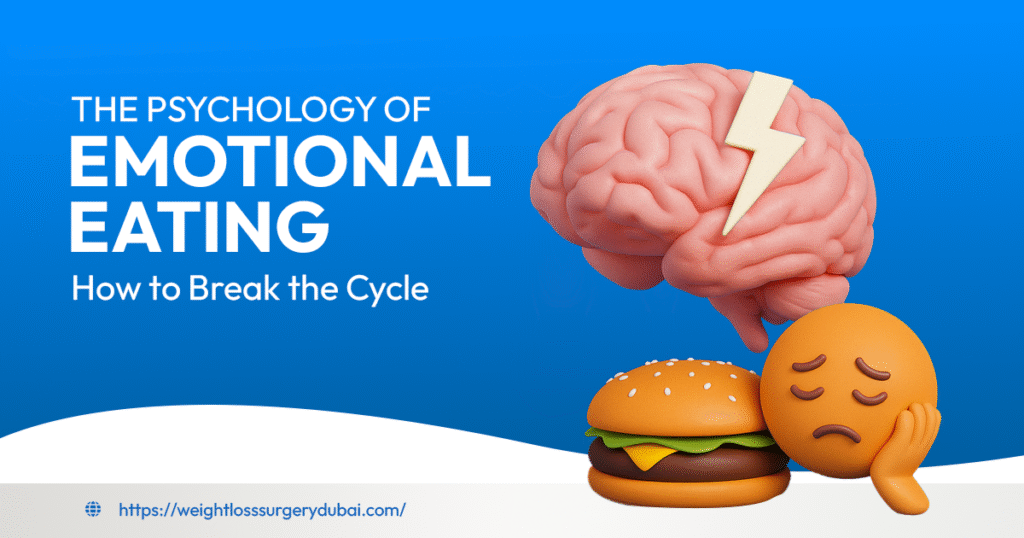
Have you ever reached for a snack—not because you were hungry, but because you were bored, stressed, or upset? That’s emotional eating. And while it’s incredibly common, over time, it can sabotage your health goals and leave you feeling worse instead of better.
In this guide, we’ll explore what emotional eating really is, why it happens, and most importantly, what you can do to regain control.
What Is Emotional Eatwing?
Emotional eating is the habit of using food to cope with emotions, rather than to satisfy physical hunger. You might find yourself eating:
- When you’re stressed or anxious
- Out of boredom or loneliness
- As a reward after a hard day
- To soothe sadness or frustration
And often, the foods we crave in these moments are high in sugar, salt, or fat—not exactly the most nourishing options.
Why Do We Eat When We’re Not Hungry?
There’s actually a science behind it. When you’re upset or stressed, your brain looks for comfort—and food can quickly trigger the brain’s reward system.
Here are some key emotional triggers:
- Stress: Elevated cortisol levels increase appetite and cravings for high-calorie foods.
- Fatigue: Lack of sleep or mental exhaustion can lead to snacking for a “pick-me-up.”
- Habit: If you’ve always turned to food for comfort, it becomes a learned response over time.
- Childhood Patterns: Maybe food was used as a reward or distraction when you were younger. That conditioning can carry into adulthood.
Signs You Might Be Emotionally Eating
It’s not always easy to tell the difference between emotional and physical hunger. Here are some clues:
| Emotional Hunger | Physical Hunger |
| Comes on suddenly | Builds up gradually |
| Craves specific “comfort” foods | Open to a variety of food options |
| Feels urgent | Can wait a while |
| Not satisfied even when full | Stops when you’re physically satisfied |
| Leads to guilt or regret after eating | No negative emotions after eating |
How to Stop Emotional Eating
Breaking free from emotional eating takes self-awareness, patience, and new coping strategies. Here’s how to start:
1. Keep a Food & Mood Journal
Track what you eat, when you eat it, and how you feel before and after. Patterns will emerge that help you understand your emotional triggers.
2. Pause Before You Eat
When you feel a craving, ask yourself:
- Am I truly hungry?
- What emotion am I feeling right now?
Even a 5-minute pause can help you respond more intentionally.
3. Find Non-Food Comfort Strategies
Instead of turning to food, try:
- Taking a walk or stretching
- Talking to a friend
- Listening to calming music or journaling
- Practicing deep breathing or meditation
Over time, these healthy habits can replace emotional snacking.
4. Practice Mindful Eating
Mindful eating helps you slow down and become more aware of what you’re eating and why. Try:
- Eating without distractions (like TV or your phone)
- Chewing slowly
- Noticing flavors, textures, and fullness signals
5. Build a Balanced Routine
Lack of sleep, chaotic schedules, and poor nutrition can all increase emotional eating. Aim for:
- Regular meals to keep blood sugar stable
- Enough sleep (7–8 hours)
- Daily movement, even if light
6. Be Kind to Yourself
Slipping up is part of the process. Don’t beat yourself up. Self-compassion actually increases the likelihood that you’ll make healthier choices moving forward.
7. Seek Support If Needed
If emotional eating feels out of control, you’re not alone—and there’s help. A registered dietitian, therapist, or support group can guide you through healing your relationship with food.
Final Thoughts
Emotional eating isn’t a lack of willpower—it’s a coping strategy. The good news is, once you recognize the emotional patterns behind your eating, you can begin to replace them with healthier habits that nourish both your body and mind.
Be patient with yourself, stay curious about your habits, and remember: your emotional well-being matters just as much as your physical health.
